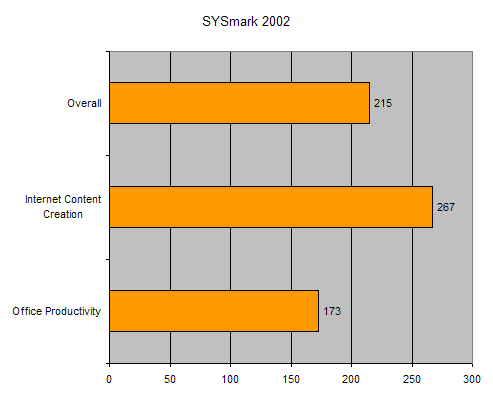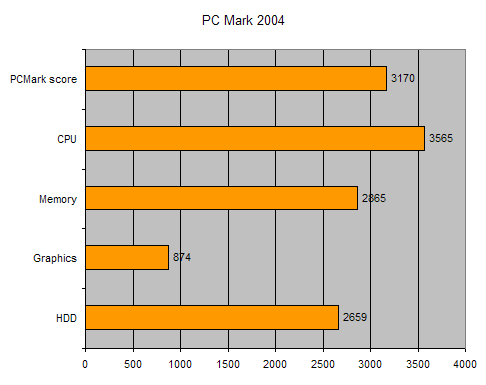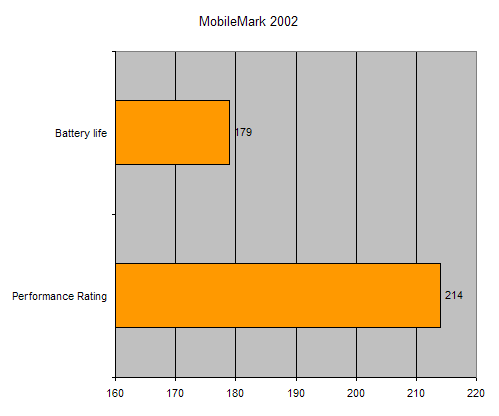Dell Latitude D410 Review
Dell Latitude D410
With a sub-notebook, portability normally means having to make sacrifices on the performance front. With the Sonoma based Latitude D410, Dell takes a very good stab at delivering both.

Verdict
Key Specifications
- Review Price: £1291.00
While we’ve looked at several notebooks from Dell, the Latitude D410 is the first from its range of business laptops. While the Inspiron brand caters for the consumer, the Latitudes are more corporate minded products. Rather than being frequently refreshed with the latest and greatest technologies, the Latitude range offers the valuable commodity of consistency, with Dell guaranteeing that the products and related parts will be available for a given period of time. This is very important to corporate customers who want to be able to settle on a particular model, roll it out to its employees and be sure it will receive support further down the line.
That said, the D410 is actually based on Intel’s latest mobile Centrino platform, codenamed Sonoma. This offers a number of benefits over the first iteration of Centrino, such as support for PCI Express, SATA hard disks, DDR2 memory, and the new Express card format. However, the D410 employs only two of these – PCI Express and DDR2. There’s also a D400 available, based on the older 855 chipset, but going for the latest technology will keep the machine current for longer.
The processor is a Pentium M 750, running at 1.86GHz – pretty high for a small notebook and as we’ll see, the D410 turned in some pretty impressive scores. This CPU is backed with 512MB of memory and as it’s two pieces of 256MBs, it’s running in dual-channel configuration.
But it’s not just technology that the D410 has going for it. It’s also very compact, with its 278 x 238 x 31.9mm dimensions and 1.72Kg weight placing it into the sub-notebook category, though it’s some way off from the ultra portability of something like a Sony X505, Samsung Q30 or even Dell’s own Latitude X1. Even so, if you need to carry around a notebook all day, every day, this is at the very least the sort of weight you should be looking at. My Apple iBook is fairly compact but at 2.2Kg I frequantly wish I had something even more lightweight. Inevitably, compromises have had to be made to reach this level of portabilty, but with an sub-notebook, this is inevitable.
First of these is the relatively modest screen size of 12.1 inches offering XGA resolution. Personally, I’ve found that the 1,024 x 768 resolution on my Apple iBook has become quite restrictive, so corporate clients should take into account what sort of tasks this notebook will be used for. If multiple documents need to be viewed at the same time, an ultra-portable with a small display is probably not the best way to go. But for presentation work, and just text work it will suffice. The screen is a conventional 4:3 ratio and lacks the high contrast reflective coating that is all the rage these days on many consumer notebooks, but again, this isn’t the market this notebook is aimed at. It is however, a rather dull display, even on full brightness, but this is merely uninspiring rather than disappointing. This does rather suggest a pun on it not being an Inspiron, but perhaps that’s something best avoided. Contrast is pretty good though and the viewing angles are reasonable too. In fact the screen can tilt back until it’s virtually flat though try as we might we couldn’t find any real benefit for this. Suggestions on a postcard.
The next area of compromise is the keyboard. Corporate fat cats will certainly have difficulty getting their stubby fingers to type at speed on the keys, which are on the small side. The right side Shift key has been shrunk, as has the space bar, but once I got used to it, thanks to a pleasing key action I was able to pick up some speed. After a while though, things do feel a little cramped, and I wouldn’t want to type on it for extended periods of time. Above the keyboard in the middle is the power key and to the right of this is a rocker switch for the speaker volume and a mute button.
There’s no dedicated buttons for enabling or disabling wireless, but this can be done instead by using the function key and pressing F2. To the left of the power switch are two lights that indicate when the integrated Wi-Fi and Bluetooth are enabled and in the base of the screen are indicator lights for power, hard disk activity and charging status. The function keys also provide shortcuts for Standby and Hibernate modes. Dell has also done well to supply both a trackpoint and a trackpad so you can choose which control method you prefer. A utility enables you to turn off the track pad if you want to avoid unwanted screen taps.
The next area of compromise due to the size is the fact that there’s no built-in optical drive. There is however, an external docking station, which Dell supplied with a DVD combo drive enabling you to watch movies or copy files onto a CD-RW. This also provides extra ports in the form of Ethernet, a modem, two USB, a serial and a parallel port and a PS/2 port for an external keyboard or mouse. There’s also a VGA output, a headphone out and an external power connector. There’s also room ofr an second battery, and you can purchase an extra 9-cell battery in addition to the 6-cell unit supplied. The latter has power remaining indicator lights built-in, activated by pressing a button on the battery. Attaching the D410 to the MediaBase was straightforward though I found that it I had to push it down a few times to get it to click into place. Once attached, the MediaBase’s connections and the optical drive appear in Windows Device Manager.
Fixed storage wise, Dell has provided a 40GB hard disk, which isn’t huge but is reasonable for a machine of this size. Round the back of the notebook is a VGA output, two USB 2.0 ports, a Gigabit Ethernet connection and an analogue modem port. There’s also a power socket and the connector attached to the external power block is pleasingly solid, ensuring that it will last the course of a life on the road. Indeed the build quality of the D410 is very solid, with no flimsy surfaces or spongy plastics that often afflict cheaper machines.
At the right hand side of the notebook is a single Type II PC Card connection with Dell. There’s no Express card support – something to bear in mind for the future. Next to this are headphone and microphone sockets, so you can use a headset, useful for making Skype calls.
On the opposite side is another standard USB 2.0 port and a lanyard security connector. Finally there’s a ‘ye olde’ infra red port.
Ultimately though, what’s so impressive about the D410 is the amount of performance that Dell has managed to squeeze into such a small package. This is largely in part to the Sonoma specifications. Certainly the integrated 915 chipset graphics aren’t that impressive but no one would think of doing any serious gaming on a notebook like this. More impressive is the CPU and I/O scores. The overall SYSmark 2002 score of 215 is great, and the Dell thoroughly outpaced the Sonoma based Sony we looked at a few days ago in all tests. This includes the battery tests, with the system lasting almost three hours.
The biggest criticisms that can be levelleled at the Dell is that it is a bit lacking in the style stakes. Certainly when you open it you won’t be as impressed as you would as you might be by an IBM Thinkpad or a up-market Sony. But when you’re in an airport somewhere, and need to get some work done quickly and efficiently, this won’t matter too much.
”’Verdict”’
The D410 is typically Dell. It may be lacking in the style stakes but this is an impressive business ultra portable notebook with a docking station for the hot-desker. Though the screen is average and the keyboard a touch cramped, when you consider the features, performance, build quality and the price, the Dell D410 will win over your mind, if not, perhaps, your heart.
(table:ft)



How we test laptops
Unlike other sites, we test every laptop we review thoroughly over an extended period of time. We use industry standard tests to compare features properly. We’ll always tell you what we find. We never, ever, accept money to review a product.
Trusted Score
Score in detail
-
Performance 9
-
Value 9
-
Features 8

